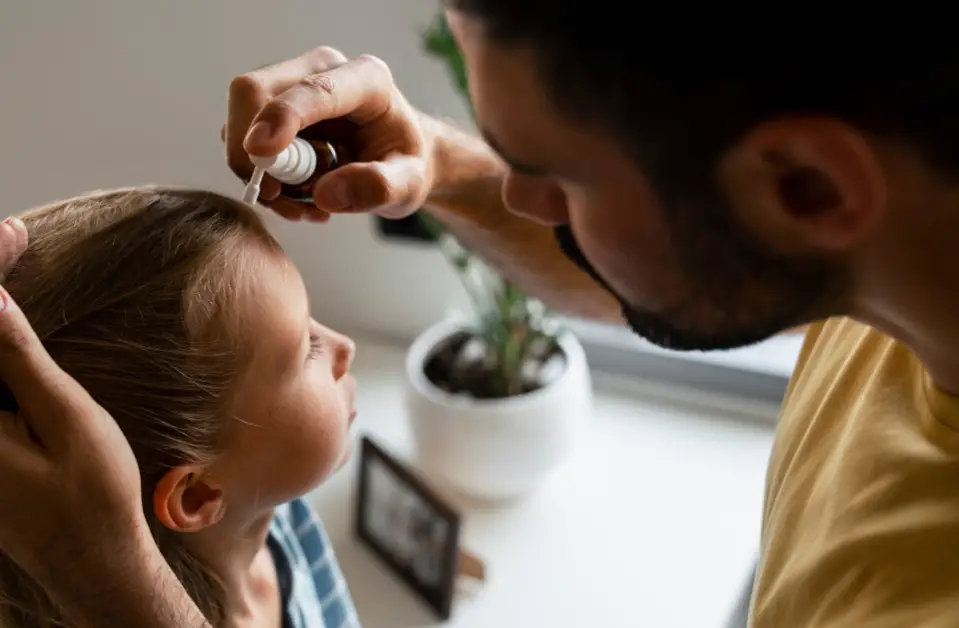Pediatric Scalp Bumps: A Comprehensive Guide for Parents
Understanding, identifying, and managing scalp conditions in children while awaiting professional medical care
Medical Disclaimer: This article is for educational purposes only and should not replace professional medical advice. Always consult with a qualified healthcare provider for proper diagnosis and treatment of any medical condition.
Introduction: When Concern Meets Reality
Discovering unusual bumps on your child’s scalp can trigger immediate parental anxiety, particularly when the next available pediatric appointment is weeks away. This comprehensive guide provides parents with essential information about common scalp conditions affecting children, helping you make informed decisions about immediate care while awaiting professional medical evaluation.
Understanding the various causes of pediatric scalp bumps—from benign folliculitis to more serious conditions requiring urgent attention—empowers parents to provide appropriate interim care and recognize when immediate medical intervention becomes necessary.
Understanding Pediatric Scalp Anatomy and Common Conditions
The pediatric scalp presents unique characteristics that make children particularly susceptible to certain skin conditions. The density of hair follicles, active sebaceous glands, and children’s tendency toward activities that promote sweating and bacterial exposure create an environment where various scalp conditions can develop.
Common Scalp Bump Categories:
Folliculitis: This condition represents inflammation of hair follicles, typically caused by bacterial, fungal, or viral infections. In children, folliculitis often results from excessive sweating during physical activity, use of occlusive hair products, or friction from tight hairstyles.
Sebaceous Cysts: These non-malignant, fluid-filled sacs develop when sebaceous glands become blocked. They appear as smooth, round bumps beneath the skin surface and are generally painless unless infected.
Furuncles (Boils): These painful, pus-filled lesions result from deep bacterial infections of hair follicles, most commonly caused by Staphylococcus aureus bacteria. They require careful monitoring and often professional medical intervention.
Contact Dermatitis: Allergic or irritant reactions to hair products, detergents, or environmental allergens can manifest as bumpy, inflamed areas on the scalp.
Insect Bites: Mosquito bites, flea bites, or other insect-related reactions can create raised, itchy bumps that may become infected through scratching.
Detailed Condition Analysis
Folliculitis: Recognition and Management
Folliculitis presents as small, red, inflamed bumps surrounding individual hair follicles. These lesions may contain pustular material and often cause significant itching or discomfort. In pediatric patients, folliculitis commonly develops following:
- Excessive sweating during sports or outdoor activities
- Use of heavy hair products or styling gels
- Wearing tight-fitting headwear for extended periods
- Poor scalp hygiene practices
- Pre-existing skin conditions that compromise barrier function
Clinical Presentation:
- Multiple small, red papules or pustules
- Distribution following hair follicle pattern
- Associated itching or mild pain
- Possible crusting if lesions have been scratched
Risk Factors in Children:
- Participation in contact sports
- Swimming in inadequately chlorinated pools
- Sharing hair accessories or headwear
- Humid environmental conditions
- Compromised immune system function
Sebaceous Cysts: Characteristics and Concerns
Sebaceous cysts in children typically develop when hair follicles become blocked with keratin and sebaceous material. These lesions are generally benign but require monitoring for signs of infection or rapid growth.
Clinical Features:
- Smooth, round, mobile lumps beneath skin surface
- Usually painless unless infected
- May have a central punctum (small opening)
- Can range from pea-sized to several centimeters
- Slow growth pattern over months or years
When to Seek Immediate Care:
- Rapid size increase
- Development of redness, warmth, or tenderness
- Discharge of purulent material
- Associated fever or systemic symptoms
Furuncles and Carbuncles: Serious Bacterial Infections
Furuncles represent deep bacterial infections that extend beyond the hair follicle into surrounding tissue. These conditions require careful evaluation and often necessitate antibiotic therapy.
Clinical Presentation:
- Large, painful, red nodules
- Central pustular core
- Surrounding cellulitis and swelling
- Size typically exceeding 1-2 centimeters
- May be accompanied by fever or malaise
Progression Patterns: Furuncles typically begin as small, tender red bumps that progressively enlarge and develop central necrosis. The natural history involves spontaneous drainage of purulent material, though medical intervention often accelerates healing and prevents complications.
Red Flag Symptoms Requiring Immediate Medical Attention
Certain presentations of scalp bumps necessitate urgent medical evaluation to prevent serious complications or address underlying systemic conditions.
Immediate Medical Consultation Indicators:
Systemic Symptoms:
- Fever exceeding 101°F (38.3°C)
- Chills or rigors
- Malaise or decreased activity level
- Loss of appetite or fluid intake
- Irritability beyond normal parameters
Local Progression Signs:
- Rapid expansion of affected area
- Red streaking extending from bumps
- Significant swelling affecting facial features
- Development of multiple large lesions
- Purulent discharge with foul odor
Neurological Concerns:
- Severe headache
- Neck stiffness
- Changes in mental status
- Visual disturbances
- Seizure activity
Complications Indicators:
- Cellulitis extending beyond scalp margins
- Lymph node enlargement in neck or behind ears
- Difficulty with normal head movement
- Signs of abscess formation
Evidence-Based Home Management Strategies
While awaiting professional medical evaluation, several evidence-based interventions can provide symptomatic relief and support healing for minor scalp conditions.
Warm Compress Therapy
Application Method:
- Use clean, warm (not hot) washcloths
- Apply for 10-15 minutes, 3-4 times daily
- Ensure water temperature is comfortable for child’s skin
- Replace washcloth if it becomes contaminated
Therapeutic Benefits:
- Promotes circulation to affected area
- Encourages natural drainage of pustular lesions
- Provides pain relief through heat therapy
- Softens crusted material for easier removal
Gentle Cleansing Protocols
Recommended Approach:
- Use mild, fragrance-free shampoos
- Avoid harsh scrubbing or aggressive manipulation
- Rinse thoroughly to remove all product residue
- Gently pat dry rather than rubbing vigorously
Frequency Considerations:
- Daily cleansing for most conditions
- Twice daily if excessive sweating occurs
- Reduced frequency if significant irritation develops
Topical Antiseptic Applications
Safe Options for Children:
- Diluted chlorhexidine solutions (as directed)
- Mild benzoyl peroxide preparations (with caution)
- Natural antiseptics like diluted tea tree oil (test patch first)
Application Guidelines:
- Apply to clean, dry scalp
- Use cotton swabs for precise application
- Avoid contact with eyes or mucous membranes
- Discontinue if increased irritation occurs
Preventive Strategies for Scalp Health
Implementing comprehensive preventive measures significantly reduces the likelihood of recurrent scalp conditions in children.
Hygiene Optimization
Daily Practices:
- Regular hair washing with appropriate products
- Complete rinsing to remove all cleansing agents
- Gentle towel drying techniques
- Proper ventilation of scalp area
Product Selection:
- Choose sulfate-free, gentle formulations
- Avoid products with heavy fragrances or dyes
- Select age-appropriate cleansing products
- Consider hypoallergenic options for sensitive children
Environmental Modifications
Clothing and Accessories:
- Ensure proper fit of headwear to avoid friction
- Choose breathable materials for hats and helmets
- Avoid sharing personal hair accessories
- Regular cleaning of reusable headwear
Activity Considerations:
- Prompt showering after vigorous physical activity
- Proper pool hygiene and post-swimming care
- Adequate hydration during hot weather
- Sun protection for exposed scalp areas
Nutritional and Systemic Support
Supporting overall health can enhance the body’s ability to prevent and heal scalp conditions.
Immune System Support
Nutritional Factors:
- Adequate vitamin C intake for tissue repair
- Sufficient zinc for wound healing
- Appropriate hydration for skin barrier function
- Balanced diet supporting overall health
Sleep and Stress Management:
- Adequate sleep duration for age group
- Stress reduction techniques appropriate for children
- Regular physical activity for immune function
- Consistent daily routines
When Home Management Is Insufficient
Recognizing the limitations of home care is crucial for preventing complications and ensuring appropriate treatment.
Indicators for Professional Evaluation:
- No improvement after 48-72 hours of home care
- Worsening of symptoms despite treatment
- Development of new concerning features
- Child’s discomfort interfering with normal activities
- Parental anxiety about condition progression
Preparation for Medical Visits:
- Document symptom timeline and progression
- Photograph lesions for comparison
- List all attempted treatments and responses
- Prepare questions about diagnosis and treatment options
Understanding Treatment Limitations and Expectations
Parents should understand that some scalp conditions require time for resolution, even with appropriate treatment.
Realistic Timeline Expectations:
- Minor folliculitis: 3-7 days for improvement
- Sebaceous cysts: May persist without surgical intervention
- Furuncles: 7-14 days with appropriate antibiotic therapy
- Contact dermatitis: Improvement within days of allergen removal
Potential Complications:
- Secondary bacterial infection from scratching
- Scarring from severe inflammatory lesions
- Temporary hair loss in affected areas
- Recurrence without addressing underlying factors
Professional Treatment Modalities
Understanding potential professional treatments helps parents prepare for medical consultations and set appropriate expectations.
Common Medical Interventions:
- Topical or oral antibiotic therapy
- Antifungal medications for fungal conditions
- Incision and drainage for large furuncles
- Corticosteroid preparations for inflammatory conditions
- Specialized shampoos for chronic conditions
Conclusion: Balanced Approach to Pediatric Scalp Care
Managing pediatric scalp bumps requires balancing parental concern with practical, evidence-based care strategies. While many conditions can be effectively managed with home interventions, understanding when to seek professional medical care remains paramount for child safety and optimal outcomes.
The key to successful management lies in careful observation, appropriate interim care, and timely professional consultation when indicated. By implementing proper hygiene practices, utilizing safe home remedies, and recognizing warning signs that require immediate attention, parents can effectively support their child’s scalp health while awaiting professional medical evaluation.
Remember that this information serves as educational guidance only and should never replace professional medical advice. When in doubt about any aspect of your child’s condition, consult with qualified healthcare providers who can provide personalized assessment and treatment recommendations based on direct examination and complete medical history.

Ethan Blake is a skilled Creative Content Specialist with a talent for crafting engaging and thought-provoking narratives. With a strong background in storytelling and digital content creation, Ethan brings a unique perspective to his role at TheArchivists, where he curates and produces captivating content for a global audience.
Ethan holds a degree in Communications from Zurich University, where he developed his expertise in storytelling, media strategy, and audience engagement. Known for his ability to blend creativity with analytical precision, he excels at creating content that not only entertains but also connects deeply with readers.
At TheArchivists, Ethan specializes in uncovering compelling stories that reflect a wide range of human experiences. His work is celebrated for its authenticity, creativity, and ability to spark meaningful conversations, earning him recognition among peers and readers alike.
Passionate about the art of storytelling, Ethan enjoys exploring themes of culture, history, and personal growth, aiming to inspire and inform with every piece he creates. Dedicated to making a lasting impact, Ethan continues to push boundaries in the ever-evolving world of digital content.
